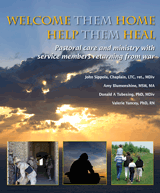We lost an advocate fighting the stigma of mental illness this week. Patty Duke died at the age of 69. She suffered with bi-polar disorder.
Long before celebrities shared their private struggles with mental illness on talk-show couches and social media feeds, actress Patty Duke broke a Hollywood taboo by speaking publicly about her personal struggles.
Duke, who died on Tuesday morning at age 69, was diagnosed with manic depression (now called bipolar disorder) in 1982. Known at the time as the goody-two-shoes child star of “The Miracle Worker” (for which she won a best supporting actress Oscar at 16) and “The Patty Duke Show,” Duke revealed revealed a much darker reality in her 1987 memoir, “Call Me Anna,” written with L.A. Times film critic Kenneth Turan. In the book, she graphically detailed her turbulent life, drug and alcohol abuse, and childhood mistreatment at the hands of cruel managers.
In talking candidly about her mental illness, Duke took on the stigma long attached to the issue. In the years since Duke’s disclosure, actresses such as Catherine Zeta Jones, Carrie Fisher, Rene Russo and Kim Novak have spoken publicly about their own bipolar diagnoses, while countless other public figures have talked about their depression. Many celebrities such as Glenn Close advocated for loved ones suffering from mental illness and helped the fight against stigma.
The text above is excerpted from “How Patty Duke broke a Hollywood taboo and became a mental health pioneer” by Rebecca Keegan in the LA Times. Downloaded March 31, 2016.
We’ve talked before about what a stigma is or is not. A stigma is extreme social disapproval of some type of personal characteristic or a belief that is not considered socially “acceptable.” People who have a particular attribute considered unwanted by society are rejected or stigmatized as a result of the attribute. People who have experienced traumatic events in the past are often judged unfairly to be crazy, violent, unpredictable, explosive, aggressive and/or unstable. These judgments, or social stigmas, can cause people who experience these issues to feel devalued as human beings. They are often ostracized from activities, rejected in social situations, stereotyped, minimized in the workplace, and shunned by others. People experiencing the stigma of reactions to traumatic events often feel extreme physical, emotional and psychological distress.
People who stigmatize and/or stereotype others bring about unfair treatment rather than help. This unfair treatment can be very obvious. For example, people make negative comments or laugh. On the other hand, this unfair treatment can be very subtle. For example – people assume that a person who experiences trauma and or mental health issues is detached, emotionless, irritable or grumpy and they avoid or shun that person.
Stigmas affect a large percentage of people throughout the world. Some of the more common stigmas are associated with physical disabilities, age, body type, gender, sexual orientation, nationality, religion, family, ethnicity, race, religion, financial status, social sub-cultures, and conduct. Stigmas set people apart from society and produce feelings in them of shame and isolation. People who are stigmatized are often considered socially unacceptable, and they suffer prejudice, rejection, avoidance and discrimination.
What Can Be Done to Combat Stigma?
Fear of judgment and ridicule about suffering from a traumatic experience or mental illness often compels individuals and their families to hide from society rather than face the criticism, shunning, labeling and stereotyping. Instead of seeking treatment, they struggle in silence. Here are some ways you can combat stereotypes and stigmas.
- You and your loved ones have choices. You can decide who is to know about your trauma and what to tell them. You need not feel guilty, ashamed or embarrassed.
- You are not alone. Remember that many other people are coping with a similar situation.
- Look into or start a support group to meet others who experience what you do.
- Seek help and remember that the activities in this workbook and treatment from medical professionals can help you to have a productive education and career, and live a satisfying life.
- Be proactive and surround yourself with supportive people – people you can trust. Social isolation is a negative side effect of the stigma linked to reactions to traumatic events. Isolating yourself and discontinuing enjoyable activities will not help.
Follow the path of the unsafe, independent thinker. Expose your ideas to the danger of controversy. Speak your mind and fear less the label of ‘crackpot’ than the stigma of conformity. ~ Thomas J. Watson
If we stamp out the stigma attached to mental health issues, shed the shame and eliminate the fear, then we open the door for people to speak freely about what they are feeling and thinking. ~ Jaletta Albright Desmond
“The most powerful way to change someone’s view is to meet them … People who do come out and talk about mental illness, that’s when healing can really begin. You can lead a productive life.” ~ Glenn Close
The material above is excerpted from the Managing Trauma Workbook by Ester Leutenberg and John Liptak, PhD.


